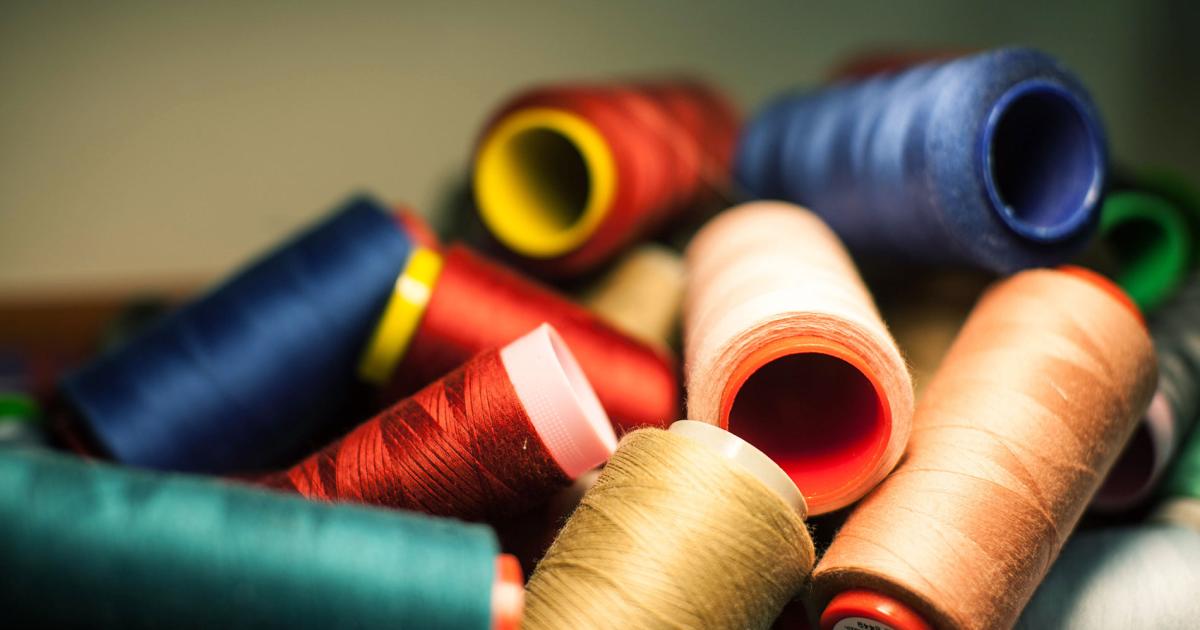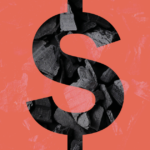Today marks the launch of the Material Change Insights Report, covering the analytics and trends associated with Textile Exchange’s Corporate Fibers and Materials Benchmark program, the largest peer-to-peer comparison initiative in the textile industry. It tracks the apparel, footwear and home textile sector’s progress toward more sustainable materials sourcing, as well as its alignment with such global efforts as the Sustainable Development Goals, the Global Biodiversity Framework and the transition to a circular economy.
Seven years ago, when we launched the Corporate Fiber & Materials Benchmark program, brand leadership in sustainability consisted of a brand using organic cotton or recycled polyester in a collection or two. Not so today. We are seeing companies pass the halfway mark for sourcing preferred materials. In fact, if you’re not rapidly phasing out your conventional materials, you’re behind the game.
To be a leader, a company must take a balanced and integrated approach to its raw materials strategy and look holistically at its risk and opportunity management. Terms such as “systems thinking” and “intersectionality” are essential to the vocabulary for transformational change in materials sustainability. It’s all connected. Despite the unavoidable complexity, it is possible to achieve multiple benefits by taking the right actions while also looking out for unintended consequences.
To be a leader, a company must take a balanced and integrated approach to its raw materials strategy.
The ability to trace raw materials back to their origin is facilitating the shift from materials portfolio management to the wider concept of stewardship. Material change requires all of us to become investors and partners in the transition toward land regeneration, habitat restoration, biodiversity recovery and climate stabilization.
The last few years have taught us that at the core of everything we do lies the need for humanity and a just transition that promotes cultural and intergenerational equity as we transition to a decarbonized, regenerative and circular economy. All this and more must be part of an adaptive and iterative leadership equation for material change.
Working in collaboration allows for a “leaderful” approach to accelerating and scaling positive impact. We need to look at leadership as a movement that we can all contribute to in varied ways. Leaders must enable others to lead, too.
This year’s Insights Report takes the reader on a journey through the 12-month sourcing and management practices of 232 brands and retailers. We pause to acknowledge the disrupting influence of COVID-19 that year, and we share the wise council of some of our most seasoned benchmarkers.
How are they doing?
Participation in this year’s Material Change Index (MCI) grew 53 percent, the fastest one-year growth rate ever, to include 292 brands and retailers (including their subsidiaries). Most of the growth was in the apparel/footwear subsector. Performance-wise, the range of scores spanned from 28.4 to 87.2 out of a possible 100 points. The average remained in the Level 3 “Maturing” band, falling only slightly from 69.1 to 68.5 despite the arrival of 101 new companies to the program.
The index serves as a benchmarking tool for companies. “Since a vast majority of our greenhouse gas emissions come from raw material sourcing, processing, and production, working throughout our supply chain is an opportunity for us to make a meaningful impact,” according to Jeannie Renne-Malone, Vice President Global Sustainability at VF Corp. “To put this into action, by 2030, VF’s Sustainable Materials Vision commits to sourcing our top nine materials from sustainably sourced, recycled or regenerative materials.” For VF, the Material Change Index serves as an authoritative yardstick to measure VF’s progress towards this goal, says Renne-Malone. “Using this tool, we are able to identify areas of progress and where innovative methods can be leveraged to drive impact.”
Here are six key insights from this year’s report:
1. Sustainable materials hit the 50 percent mark. For the first time, the index has reached 50 percent sustainable materials use, up from 44 percent the previous year. Digging into the largest material categories, cotton and polyester, “preferred cotton” represents 65 percent of overall cotton used by participating brands, and recycled polyester jumped to 32 percent of polyester use, compared to 21 percent the year before.

COVID-19 impacted participants’ sourcing patterns, meaning that overall consumption of materials was only marginally higher this year (1.3 percent) despite increased participation, yet preferred materials increased by 15 percent. Time will tell if this was due to the pandemic or a real shift to preferred materials, or even an early sign of dematerialization. For now, it is rewarding to see the favorable shift in proportions moving towards preferred.
2. Growth in recycled dominated by non-textile inputs. Progress has been made in the uptake of recycled inputs, which represent 33 percent of synthetic fibers and 12 percent of materials overall. This growth in recycled is predominantly dominated by plastic packaging waste. While in the short term the substitution of virgin polyester for recycled holds merit, the push must continue from plastic packaging waste to textile-to-textile. Our data shows that there was only a slight increase in the textile-to-textile share. Post-consumer textile waste is at 1.49 percent of recycled inputs and 0.18 percent of textile use overall, as reported by participating brands.

3. Greenhouse gas decrease reflects slower growth as well as an increase in recycled. Emissions fell by 5 percent last year, which reflects a saving of the equivalent of 1.9 million tonnes of CO2 when compared to a conventional materials portfolio. This decline is influenced by the COVID-19 “low-growth” 1.3 percent scenario (compared to a business-as-usual scenario of 3 percent) as well as from the conversion to preferred materials, particularly recycled polyester. Greenhouse gas data is modeled using the Sustainable Apparel Coalition’s Higg Material Sustainability Index and its available data sources.
4. Land under improved practices is increasing, but metrics need to link to geographical context. The MCI represents over 12 million acres of cropland and forestry under improved practices, such as sustainability programs and certification — nearly 2.5 million more acres than last year but still only 17 percent of the total land area from which land-based materials were sourced by index participants in 2020. To date, our modeling can approximate land area, numbers of fiber-producing animals covered by standards and similar attributes. However, linking materials to landscapes will be needed to track actual impacts on the ground, such as carbon sequestration, adaptation and resilience, and outcomes for nature. Knowledge of place will be critical to reaching the Sustainable Development Goals.
5. The transparency of sourcing regions must improve. The line of sight to sourcing origins is an increasing priority for companies, and tools are advancing rapidly that help. Index results suggest that country-of-origin knowledge hovers around 48 percent of materials sourced. Textile raw materials are being traced back to 49 companies, dominated by India, China, Turkey, the U.S. and Pakistan. As the sourcing of recycled materials increases, origins and circumstances of waste collection (secondary inputs) will become more important for integrity and monitoring impact.
6. Early signs of brands decoupling value creation from resource extraction. The transition to a circular system has the potential to unlock huge economic opportunity for brands willing to innovate and invest in new ways of doing business. Although too early to prove a trend, the number of companies reporting data on recommerce grew from six to 13 (out of 114), and about 600,000 more items were in resale in 2020 over 2019. Evidence suggests that the pandemic contributed to this growth. While takeback volumes dropped 30 percent, possibly also due to COVID, other activities such as rental, repair and upcycling all grew. It is too soon to tell if this data is representative of industry change or indeed if it results in a contribution to a more sustainable world.

A year disrupted
The year 2020 will always be associated with the onslaught of the global pandemic. It will be remembered as a “pause” year in many ways, resulting in extraordinary disruption and shock to business, society and families all over the world. Yet it was a year that saw the resilience of people, including many in our industry, rise to a new level of humanity and imagination — a year of adaption and innovation likely preparing us for, sadly, a future of increasing uncertainty, climate-related shocks and other COVID-19-style calamities.
Three positive takeaways
Despite the struggles, some good things happened. Here are the key insights from the 133 brand that answered our questionnaire:
- Sourcing experiences were polarized. Half the companies experienced significant disruptions and cut back everywhere, while others doubled down on preferred materials or were resilient enough in their supply relationships to navigate the shocks.
- A radical pivot to digital. From buying and selling platforms to innovation in 3D printing and the use of traceability tech, almost everything that could, quickly went online.
- Circularity plans accelerated. As many companies rose to the challenge of COVID as struggled with it — often at the same time. Out of the hardship we may see inspired strategies that take advantage of this moment and further ignite the transition to a circular economy.
Leaders’ insights
We also spoke to 23 leaders about the future priorities they envisage for material sourcing, and about how the industry can get prepared. Here is what we learned:
- Preferred won’t be optional. All materials will need to deliver sustainability benefits; no one can afford to pick and choose.
- There is an urgency to scale solutions. With a lot of the tools, resources and innovation needed already available, it’s time to focus on action.
- Dematerialization is crucial. Companies will need to dematerialize and start decoupling value creation from the extraction of resources to create new products.
- More regulation is needed. Leaders are demanding more laws and controls to raise the bar, leveling the playing field for brands and retailers that want to be better.
- It’s going to take persistence. We will not be regenerative and circular overnight. Advice is to stay resolute, stay committed to good intentions and invest not for a year or two but until the job is done.
- No more middle ground. From company size to supply-chain links to the gap between the “fastest of fast fashion” and companies with a higher calling, the middle-sized, middle links and middle ground will disappear.
Increasingly, the reputation of these companies will be linked to their material impact. “The fiber and materials we use in our commercial endeavors reflect the values of our company, weaving us into the quilt of global health, environment and a flourishing economy,” Scott Mackinlay Hahn, founder of Loomstate, said. “For Loomstate, participating in the Textile Exchange’s benchmarking community is essential, our commitment is the alchemy of higher-quality products.”
Race to the top
Benchmarking can catalyze a race to the top, triggering healthy competition between companies. But the race will be won only if we all get to the top together.
At Textile Exchange we encourage and support a community of practice approach. We want all companies, small or large; early adopters or later bloomers; retailers and suppliers to be leaders in creating material change. We need leaders at every link in the materials chain, and in every business niche. The more that suppliers make demands on retailers, as well as the other way around, the greater the opportunity to collectively accelerate and scale from good to great — and, in the process, redefine business success. For example, smaller companies bring new ideas and creativity, and can be a hotbed for innovation. Larger companies can scale impact through size and influence.
As the adage goes, you can’t manage what you don’t measure, and this simple fact means a solid benchmarking program is an essential tool for this decisive Decade of Action.
Credit: Source link



